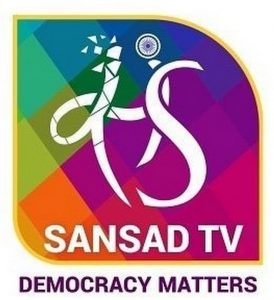[ad_1]
Introduction:
Karnataka is witnessing a huge uproar over the insistence of some Muslim girls to wear hijab in schools and colleges. The controversy erupted after a college in Udupi refused permission to Muslim girls for wearing hijab in classrooms citing the dress code that was in effect for students. After a five-day break to cool tensions over the hijab ban controversy, high schools reopened in Karnataka. As a precautionary measure, the police in Udupi and Mangaluru has imposed prohibitory orders near campuses for six days till Saturday. Karnataka High Court resumed the hearing on this matter on Monday. Last week in an interim order the Karnataka HC had restrained students — regardless of their religion or faith — from wearing saffron shawls, scarves, hijab and religious flags in classrooms until further notice.
- In Amna Bint Basheer v Central Board of Secondary Education (2016),the Kerala High Court held that the practice of wearing a hijab constitutes an essential religious practise but did not quash the dress code prescribed by CBSE. It rather provided additional safeguards, such as examining students wearing full sleeves when needed.
- In Fathima Tasneem v State of Kerala (2018),Kerala HC held that collective rights of an institution would be given primacy over the individual rights of the petitioner. The case involved two girls who wanted to wear the headscarf. The school refused to allow the headscarf. However, the court dismissed the appeal as students were no more in the rolls of the respondent-School.
- Observations made by the Supreme Court in this matter:
- People have a right under the Constitution to profess, practise and propagate religion (Article 25).
- Every person is the final judge of his/her choice of religion or who their life partner should be. Courts cannot sit in judgment of a person’s choice of religion or life partner.
- Religious faith is a part of the fundamental right to privacy.
- Shirur Mutt case in 1954:The doctrine of “essentiality” was invented by the Supreme Court. The court held that the term “religion” will cover all rituals and practices “integral” to a religion, and took upon itself the responsibility of determining the essential and non-essential practices of a religion.
Hijab ban – an unreasonable limitation:
- The niqab is currently banned in France and Belgium (since 2011), Austria (since 2017),Denmark (since 2018).The Netherlands also has a partial ban on wearing any kind of face cover in public transport, schools and hospitals. In Germany, the niqab is banned while driving. The full face veil is banned in Quebec in Canada and in Barcelona in Spain.
- In October 2018,the UN Human Rights Committee had declared that France’s ban disproportionately harmed the right of women to manifest their religious beliefs and could have the effect of confining them to their homes, impeding their access to public services and marginalising them.
- The Burqa Ban’s Burden Is Excessive Relative to its Objective. While it is sometimes necessary to identify an individual for security purposes, prohibiting a woman from wearing the religious garb of her choice in scenarios apart from those already addressed by existing legislation is an excessive burden compared to the speculative, marginal improvement in security that may result.
- The decision from a secular state will be seen as an “arbitrary” decision and an “indirect violation of women’s freedom of expression”.
- It is against the tenets of equality to all religions and is seen as a majoritarian suppression of the minorities in a country.
- This can foment into anger and violence against state leading to disharmony in the society in the form of communal riots.
- It further leads to polarization of the society by targeting a particular community.
- For some women living in rough areas the burqa , and other headdresses, can act as a defence against abuse.
Hijab ban – a justifiable restriction:
- The burka is a reflection of culture rather than an accepted interpretation of Islam and it remains an alien imposition in large areas of the Muslim world.
- The Koran enjoins all Muslims – whether male or female – to dress modestly and refrain from revealing “any parts of their bodies, except that which is necessary”.
- Beyond this general instruction, the holy book offers no specific guidance on female clothing. Its pages contain no mention of the burka or, for that matter, of the other varieties of dress that are now associated with Islam, including the hijab, or veil.
- The burka appears to have originated in Persia in the 10th century, before slowly spreading to the Arabian Peninsula and present-day Afghanistan and Pakistan.
- Elsewhere in the Muslim world, the garment remained largely unknown until relatively recently. It was the rise of the Wahhabi and Deobandi traditions which spread the burka to areas where it was previously invisible, including West Africa.
- Against Right to freedom: the compulsory wearing of burka is imposition of the religious tirade on the personal freedom of women and girls. It is also seen as a form of patriarchal dominance. Promotes gender equality and helps in women empowerment.
- Progressive women’s organisations argue that the ban is justified because the burqa oppresses women. Others reject the burqa as a neocolonial import from the Gulf states.
- Security concerns: It is argued that wearing the burka could help criminals and terrorists hide their identities. Indeed, several criminals have reportedly used the burqa or niqab – a veil that covers the face but not the eyes – to perpetrate crimes, including theft and terrorist activities.
[ad_2]


